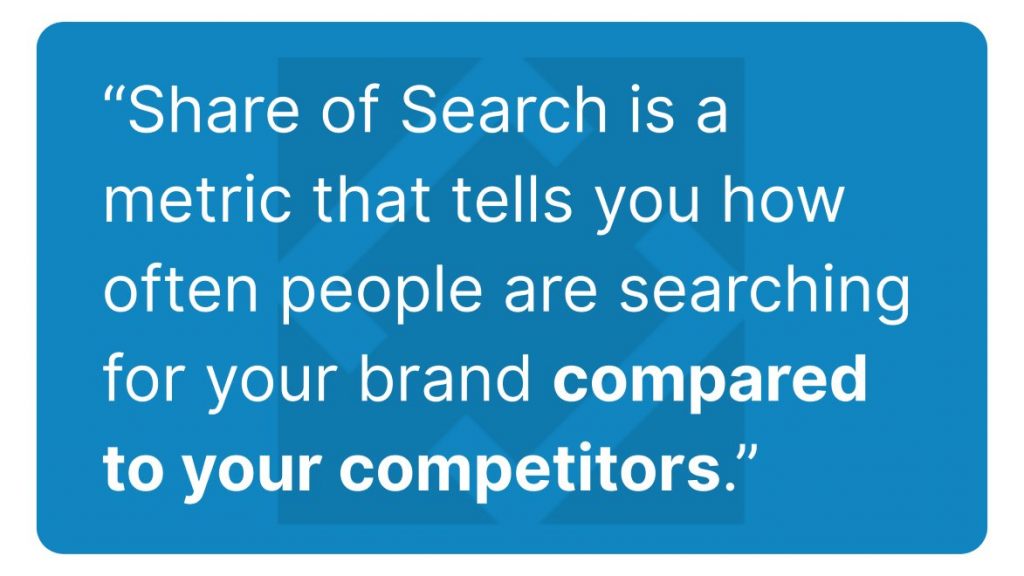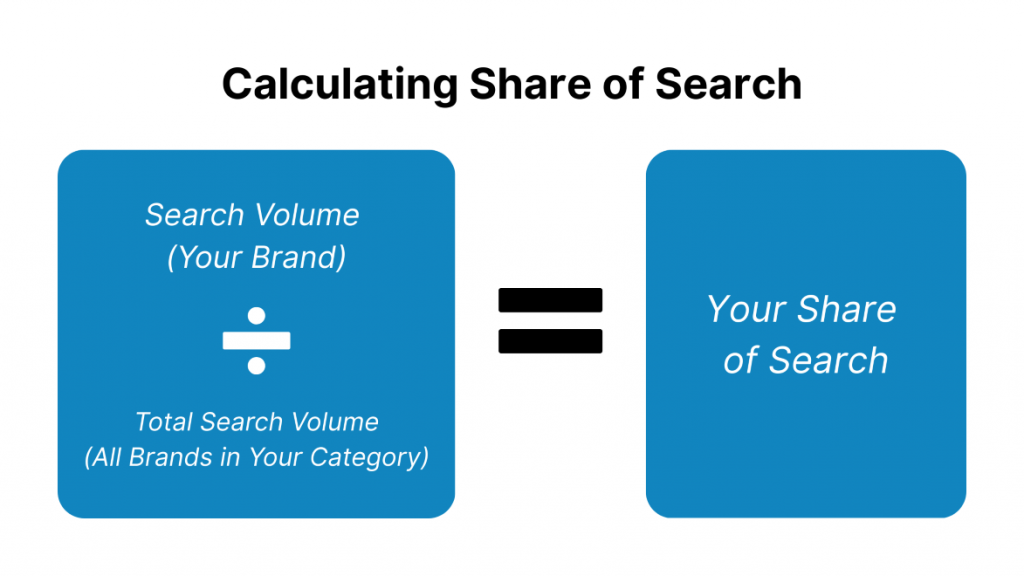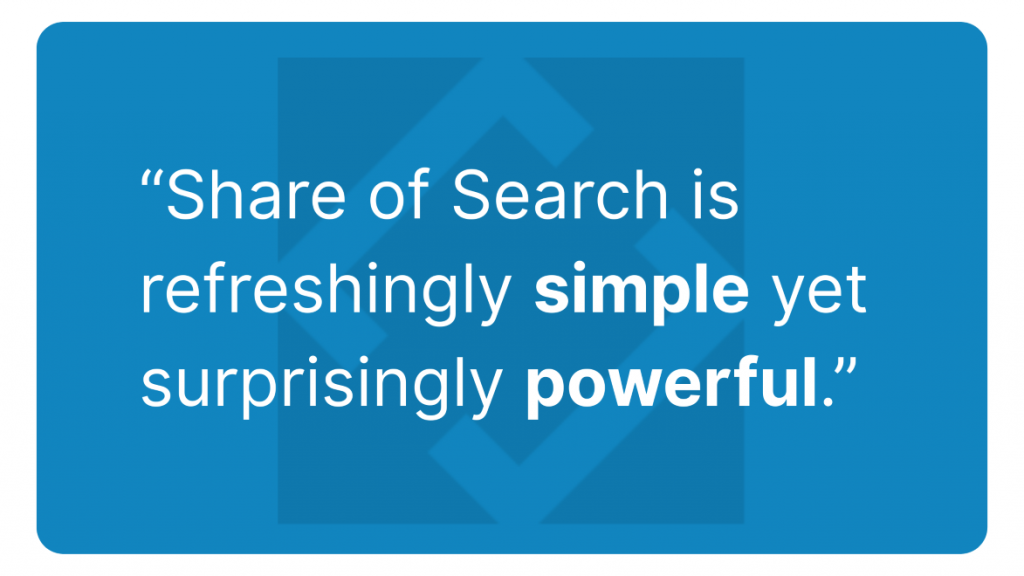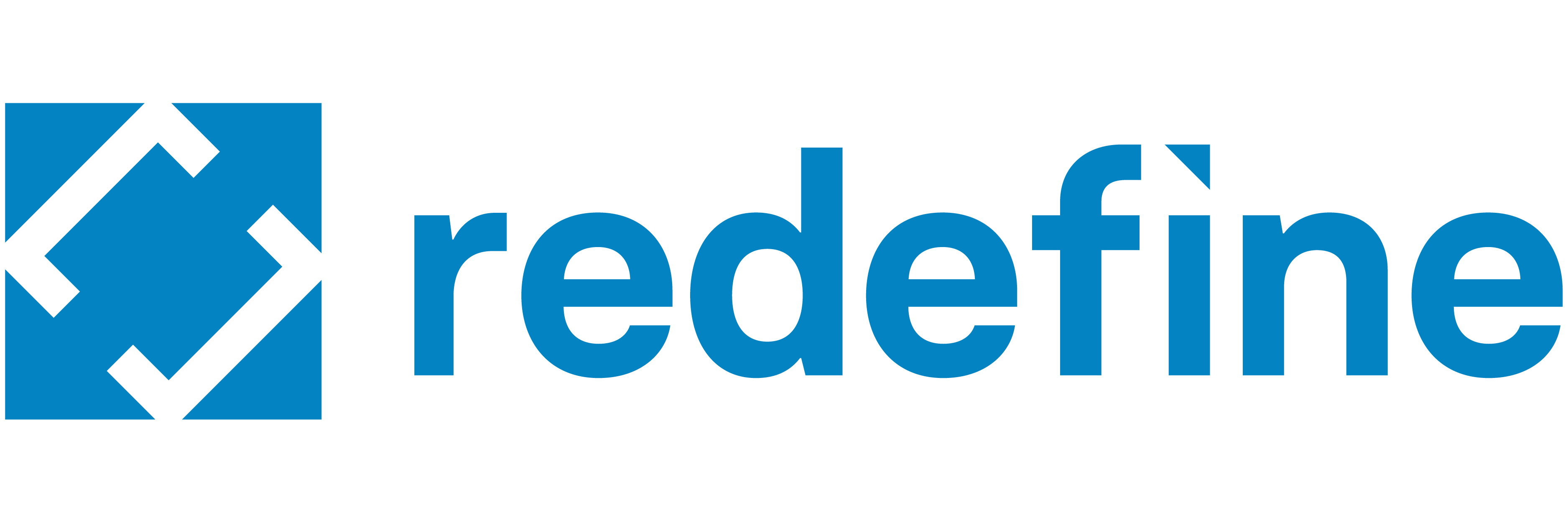- Share of Search (SoS) measures how often people search for your brand compared to competitors, making it a simple but powerful brand health metric.
- Rising SoS often signals market share growth and stronger brand awareness, while declines can flag competitive threats or fading visibility.
- You can calculate SoS by dividing your branded search volume by the total search volume of your market category.
- Tools like Google Trends, SEMrush, or Ahrefs help track branded searches and reveal shifts in audience interest over time.
- Tracking SoS alongside traffic, conversions, and competitor trends gives a clearer picture of marketing effectiveness and brand momentum.
Marketing has evolved dramatically over the last decade. Between algorithm updates, new platforms, and constant consumer behavior shifts, it’s never been more important for brands to track how they’re performing in the minds of their audience.
But while many teams obsess over impressions, clicks, or keyword rankings, there’s one underrated metric quietly gaining steam among savvy marketers: Share of Search (SoS).
If you’re not using Share of Search to measure the effectiveness of your organic marketing campaigns yet, you’re leaving valuable insights on the table. In this post, we’ll break down what Share of Search means, how to calculate it, and how your brand can use it to make sharper, smarter decisions across marketing channels.
What is Share of Search?
At its core, Share of Search is a metric that tells you how often people are searching for your brand compared to your competitors. Think of it like Share of Voice, but for the search engine landscape. Instead of measuring how much people are talking about your brand, it measures how many people are actively looking for it.
SoS is typically calculated using branded search volume. So if people are Googling your brand name, that’s a branded search. The more people search for your brand (versus other brands in your category), the higher your SoS.
Here’s a quick analogy: imagine you’re running a sneaker brand. People search for “Nike” 70 times, “Adidas” 20 times, and “Your Brand” 10 times in a given month. Your SoS is 10% of that pie. 10% might not necessarily sound impressive, but even a small amount of branded searches can signal growing interest and brand equity.
This metric is especially powerful because branded searches often come from “high-intent” users – the consumers most likely to make a purchase or sign up. They’ve heard of your brand, they’re interested, and they’re making an active effort to learn more. That’s marketing gold!

Why does Share of Search matter?
Marketing teams love data. But not all data is created equal. Here’s why Share of Search deserves a spot on your dashboard:
1. It’s a good indicator for market share
According to several studies, there’s a strong correlation between Share of Search and actual market share. That makes it a valuable predictive indicator of your brand’s performance. If more people are searching for your brand or product by name, it’s a sign that you’re gaining more ground over your competitors.
2. It reflects brand health
While metrics like bounce rate or time-on-site measures how users behave on your website, SoS measures user behavior before a user ever clicks. This tells you something deeper: how memorable, visible, or top-of-mind your brand is in a given market.
3. It’s a great indicator of your brand’s marketing
If your digital marketing campaigns are working, branded searches should go up. Share of Search can help tie those organic efforts to a measurable increase in brand interest.
4. It levels the playing field
Smaller brands often struggle to compete with bigger competitors in ad spend or product assortment. But Share of Search is based on public behavior, not marketing budgets. If people are actively searching for you, it means you’re punching above your weight.
How to calculate share of search
Here’s how to calculate Share of Search in its simplest form:
Branded Search Volume for Your Brand / Total Branded Search Volume for All Brands in Your Category
Let’s say you’re comparing your brand against two competitors. Here’s an example using hypothetical branded search volumes for a month:
- YourBrand: 10,000 searches
- Competitor Brand A: 15,000 searches
- Competitor Brand B: 25,000 searches
Total branded search volume = 10,000 + 15,000 + 25,000 = 50,000
Your Share of Search = 10,000 / 50,000 = 0.20, or 20%
It’s really that simple. But the real power comes when you start tracking it over time.

Where to find your data
To calculate Share of Search, you’ll need reliable branded search volume data. Here are a few tools you can use:
- Google Trends: This is a free tool that shows the relative search interest over time. While it doesn’t give you exact numbers, you can use the data to create an index and compare brand search interest across multiple brands.
- Google Keyword Planner: Provides estimated monthly search volumes. It’s geared more toward advertisers, but can still help with branded keyword research.
- SEMrush and Ahrefs: These SEO tools offer branded keyword data, often with historical tracking. They’ll also help you uncover related search terms, so you can build a more complete picture of how people are searching for your brand.
- Brandwatch, Similarweb, or Sprout Social: If you want to go deeper into market and competitive analysis, these tools can help with deeper insights.
Best practices for using Share of Search in your strategy
Now that you know how to measure SoS, here’s how to use it to make smarter marketing moves:
1. Track it over time
One month of data is helpful. But trends are where the magic happens. Are you gaining ground? Losing interest? Seeing seasonal spikes? Make it a habit to track SoS monthly or quarterly, just like you would other KPIs.
2. Compare it with market events
If you launched a new campaign, rolled out a rebrand, or got a big media mention, look for spikes in branded search shortly afterward.
This helps you connect brand marketing activities to actual public interest and helps to inform your marketing strategy and capitalize on the dips and spikes.
3. Segment by geography or product lines
If your brand operates in multiple regions or offers multiple products, segment your SoS data accordingly. You might be crushing it in New York but struggling in Memphis. Or maybe your eco-friendly line is driving most of the interest versus your regular line. This level of insight helps with targeting.
4. Pair it with other metrics
Share of Search is powerful, but not perfect on its own. Use it alongside traffic, conversions, or sales data to build a fuller picture. For instance, if your SoS is growing but traffic is flat, you might have an SEO issue. If both are growing, your organic strategy is probably working well.
5. Benchmark against competitors
To quote Sun Tzu’s Art of War, “know thine enemy.” Watch how your competitors’ branded search trends compare to yours. If their interest spikes after a campaign, study what they did. If yours spikes after a content launch, double down. It’s not about copying, it’s about learning what resonates in your market.
How to improve your Share of Search
Here are some ways to grow your Share of Search organically:
- Publish high-quality, consistent content: Whether it’s blog posts, videos, or social media content, when you stand out, you give people a reason to remember your brand and look you up later.
- Focus on brand-building campaigns: Performance marketing is great, but don’t forget long-term brand equity. Emotional storytelling, thought leadership, or standout design can spark interest and awareness that leads to search.
- Collaborate with influencers or media outlets: In the era of influencers, affiliates, and social media marketing, third-party validation can get people curious. If a trusted voice mentions your brand, new audiences may go search for it.
- Use your brand name consistently: While this may seem obvious, always make sure your brand name is mentioned clearly in your digital content. This helps people associate keywords with your business and increases the chance of branded search later.

Final thoughts
In a world full of countless metrics and indecipherable dashboards, Share of Search is refreshingly simple yet surprisingly powerful. It’s intuitive, actionable, and gives you a pulse check on how well your brand is sticking in people’s minds.
Whether you’re a startup trying to make a name for yourself or an established brand optimizing your organic strategy, tracking SoS can help you understand what’s working, what isn’t, and how to grow more meaningfully.
So add it to your metrics stack. Watch the trends. And use them to create a brand people don’t just scroll past, but search for.
If you’d like help measuring your brand’s Share of Search or turning your data into insights that move the needle, reach out to our marketing team at Redefine. We can help you focus your energies where you need them and help you elevate your brand.





